Alligator
Les informations données ne sont pas des conseils en investissement
L'Alligator est un indicateur qui a été développé par Bill Williams. Son but est d'identifier une tendance et sa direction et de filtrer les bons signaux des mauvais signaux, afin d'éviter de se lancer sur un marché limité par un range pouvant mener à des pertes.
L’indicateur est constitué de 3 moyennes mobiles décalées pour le futur :
- Mâchoire d’alligator (ligne bleue) - Moyenne mobile lissée sur 13 périodes déplacée de 8 barres vers le futur.
- Dents d’alligator (ligne rouge) - Moyenne mobile lissée sur 8 périodes, déplacée de 5 barres vers le futur.
- Lèvres d'alligator (ligne verte) - Moyenne mobile lissée sur 5 périodes déplacée de 2 barres vers le futur.
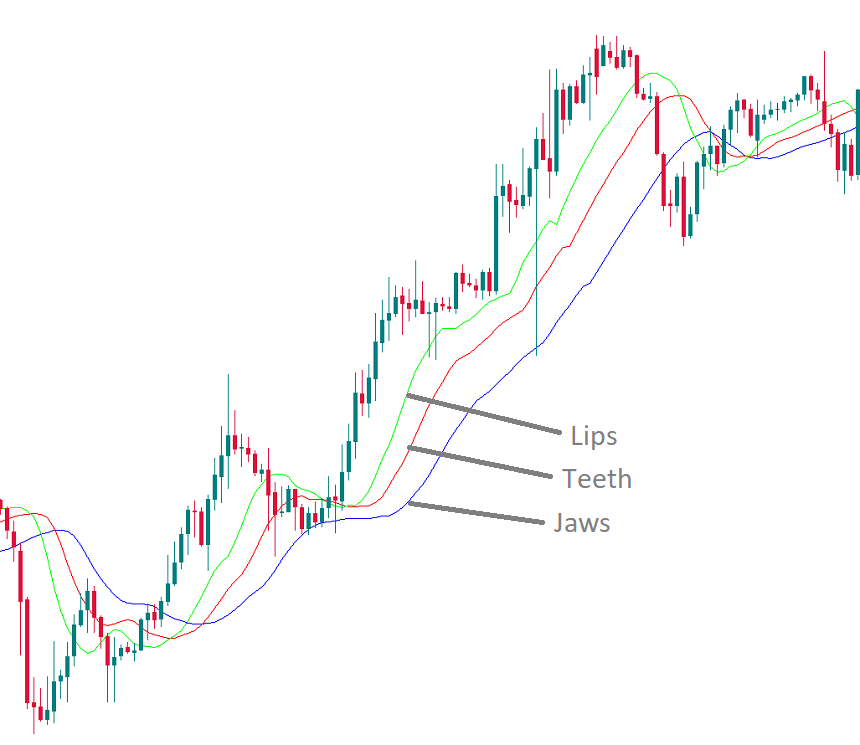
Bill Williams qualifie ces moyennes mobiles de "lignes d'équilibre". Vous pouvez voir qu'il a également donné des noms créatifs à l'indicateur et à ses éléments. Son idée était de fournir un exemple qui illustrera le comportement du marché. Cet exemple est l'alligator qui alterne les périodes de sommeil et de chasse.
Lorsque la mâchoire, les dents et les lèvres sont interconnectés, cela signifie que l’alligator est endormi et qu’il n’ya pas de tendance haussière ou baissière sur le marché. Bill Williams recommande de rester en dehors du marché lors de telles périodes. Plus l'alligator dort longtemps, plus il a faim, plus il se réveille. Quand il se réveille après un long sommeil, il ouvre la bouche (les moyennes mobiles divergent) et se prépare à prendre une grosse part du marché. C'est le moment de trader ! L'alligator chassera le prix plus loin et permettra de faire un profit décent. Après avoir suffisamment mangé, l'alligator se rendort (les moyennes mobiles convergent), il est donc temps de prendre des bénéfices.
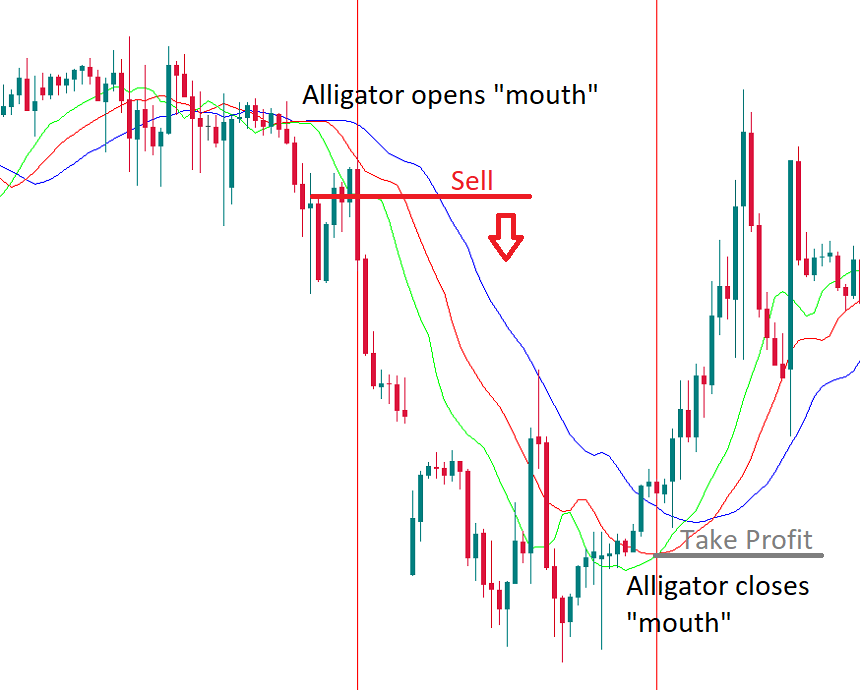
Si l'alligator n'est pas endormi, le marché est soit à la hausse soit à la baisse.
- Si le prix est supérieur à la gueule de l'alligator, c'est une tendance à la hausse. Les lignes indicatrices prennent un ordre haussier (vert en haut, puis rouge, puis bleu).
- Si le prix est inférieur à la bouche de l'alligator, c'est une tendance à la baisse. Les lignes de l’alligator suivent un ordre baissier (bleu en haut, puis rouge, puis vert).
Les lignes d'équilibre peuvent fournir une résistance / un soutien pendant la phase de la tendance. Le prix peut aller au-delà de la ligne verte pour de courtes périodes. Plus il tente de briser la ligne verte, plus la tendance s’affaiblit.
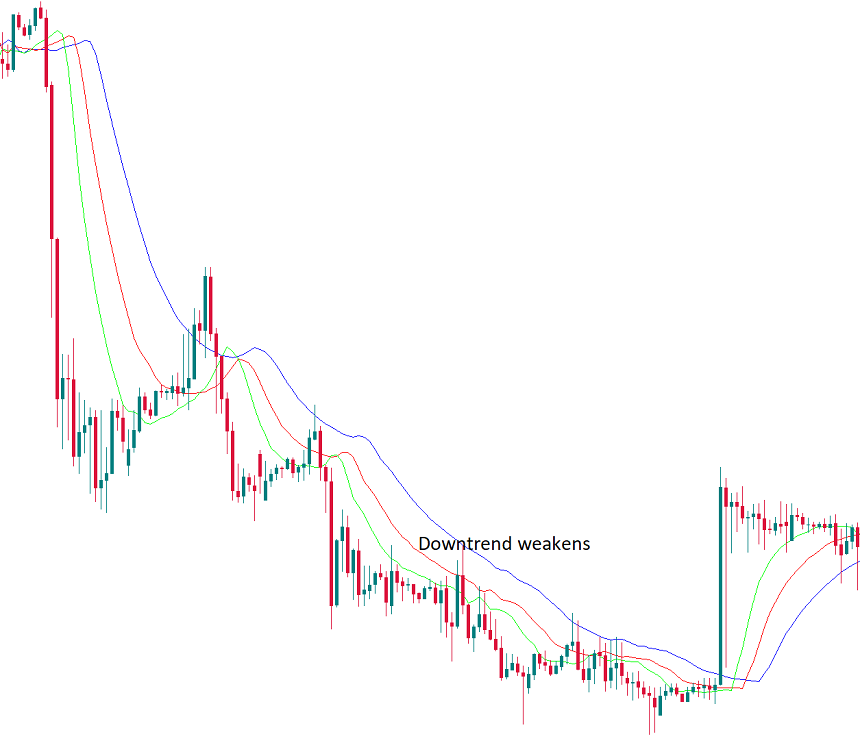
Il est également possible de rechercher les "fausses croisements" ou les situations dans lesquelles la ligne verte traverse la ligne rouge puis s'inverse. Si un tel croisement s'est produit lors d'une tendance haussière, vous pouvez acheter une fois que la ligne verte est revenue au-dessus de la ligne rouge.
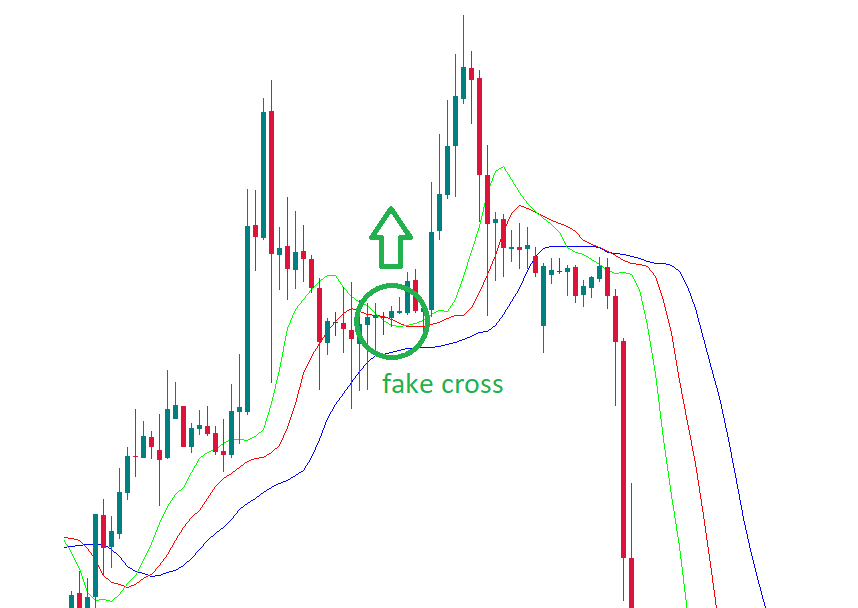
Combinaison de l'Alligator avec d'autres outils
Il peut y avoir de nombreuses combinaisons différentes entre Alligator et d’autres outils d’analyse technique. Voici quelques suggestions.
1. Recherchez une figure de retournement (modèle de graphique ou de chandelier). Une fois que vous l’avez identifié, utilisez l'Alligator pour la confirmer (attendez que la ligne verte croise les autres lignes).
2. Utilisez l'Alligator avec les fractales. Attendez le moment où l’alligator est en sommeil (les lignes de balance s'entrecroisent). Mettez un ordre Buy Stop 1 pip au-dessus de la dernière fractale située au-dessus de la bouche de l’alligator.
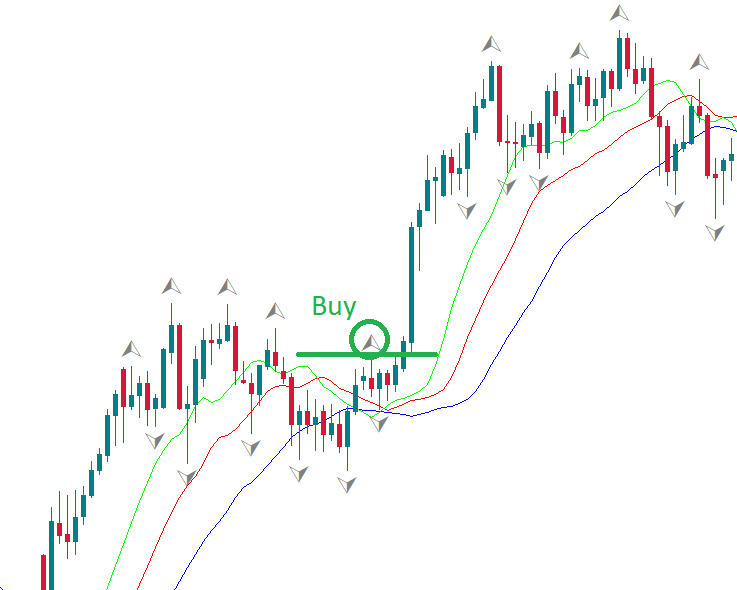
Conclusion
L'indicateur Alligator a une formule unique qui le distingue d'un simple ensemble de moyennes mobiles. Basé sur des moyennes mobiles, l'indicateur réagit aux changements de prix avec un décalage. En même temps, il peut être utilisé à la fois pour déterminé le début d’une nouvelle tendance et le moment où une tendance reprend après une correction. L'Alligator est un système de trading prêt à l'emploi qui peut être accompagné d'autres outils d'analyse pour une plus grande précision lors de votre trading. Lorsque vous utilisez l'Alligator, regardez le graphique avec plusieurs intervalles de temps.
Autres articles de cette section
- Ventilateur Fibonacci
- Fibonacci expansion
- Comment utiliser les retracements de Fibonacci
- Figures de retournement (en chandelier)
- Figure de continuation en chandeliers
- Comment gérer le bruit du marché ?
- Comment backtester une stratégie de trading
- Oscillateur Gator
- Awesome Oscillator
- Ranges
- Théorie de Bill Williams
- Fractales
- Figures chartistes
- Les indicateurs de Gann
- Comment créer votre propre stratégie de trading ?
- Figures de chandeliers
- Trading de tendance
- Carry trade
- Swing trading
- Position trading
- Day trading
- Scalping
- Styles de trading
- Que sont les outils de Fibonacci ?
- Psychologie
- Comment identifier un retournement du marché
- Chandeliers japonais
- Tendances
- Conditions et phases du marché












